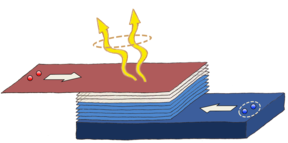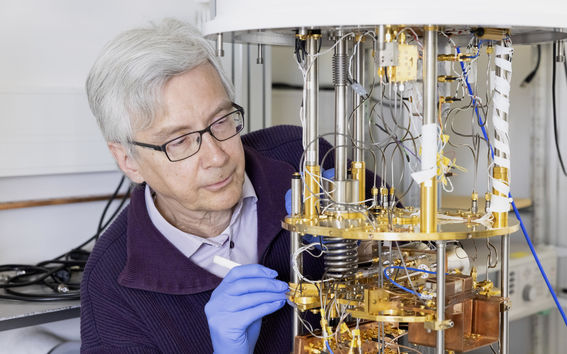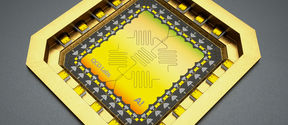Schematic view of the entangled photon generator. The dark blue bottom layer is a superconductor from which the paired, entangled electrons tunnel through the light blue layered structure to the upper layers. The entangled photon pair is created, when the tunneled electrons make a transition to empty lower energy levels simultaneously. Picture: Ethan D. Minot.
Entanglement is a central phenomenon of quantum mechanics. It enables two photons to be connected with each other regardless of distance, and it is the basis of the immense potential of quantum technologies. However, the continuing development of quantum computers, cryptography, and sensors requires new, more efficient sources of entangled photon pairs.
Researchers at Aalto University plan to build a revolutionary LED light source to generate entangled photon pairs. The research group led by Professor Pertti Hakonen has received three-year funding from the Future Makers Funding Program of Technologies Finland Centennial Foundation and Jane and Aatos Erkko Foundation.
‘Previously, entangled photons have been produced with non-linear crystals, which is extremely clumsy and rather inefficient, as just a few quantum pairs are extracted, and the generation process is random and has a low efficiency,’ Hakonen explains.
In the new project, the researchers will develop an effective, compact, bright and controllable source for entangled photons. Their approach is based on modern material science technologies which make it possible to create layers of single or few atoms, such as graphene, boron nitride, or molybdenum disulfide, and tailor them to form custom structures.
‘The layer structure can be used to adjust whether the material is locally metallic or semiconducting and also whether it is a weak or strong semiconductor. The layered structure also enables electrons to tunnel – that is, to traverse the material – to produce entangled light,’ Hakonen says.

















